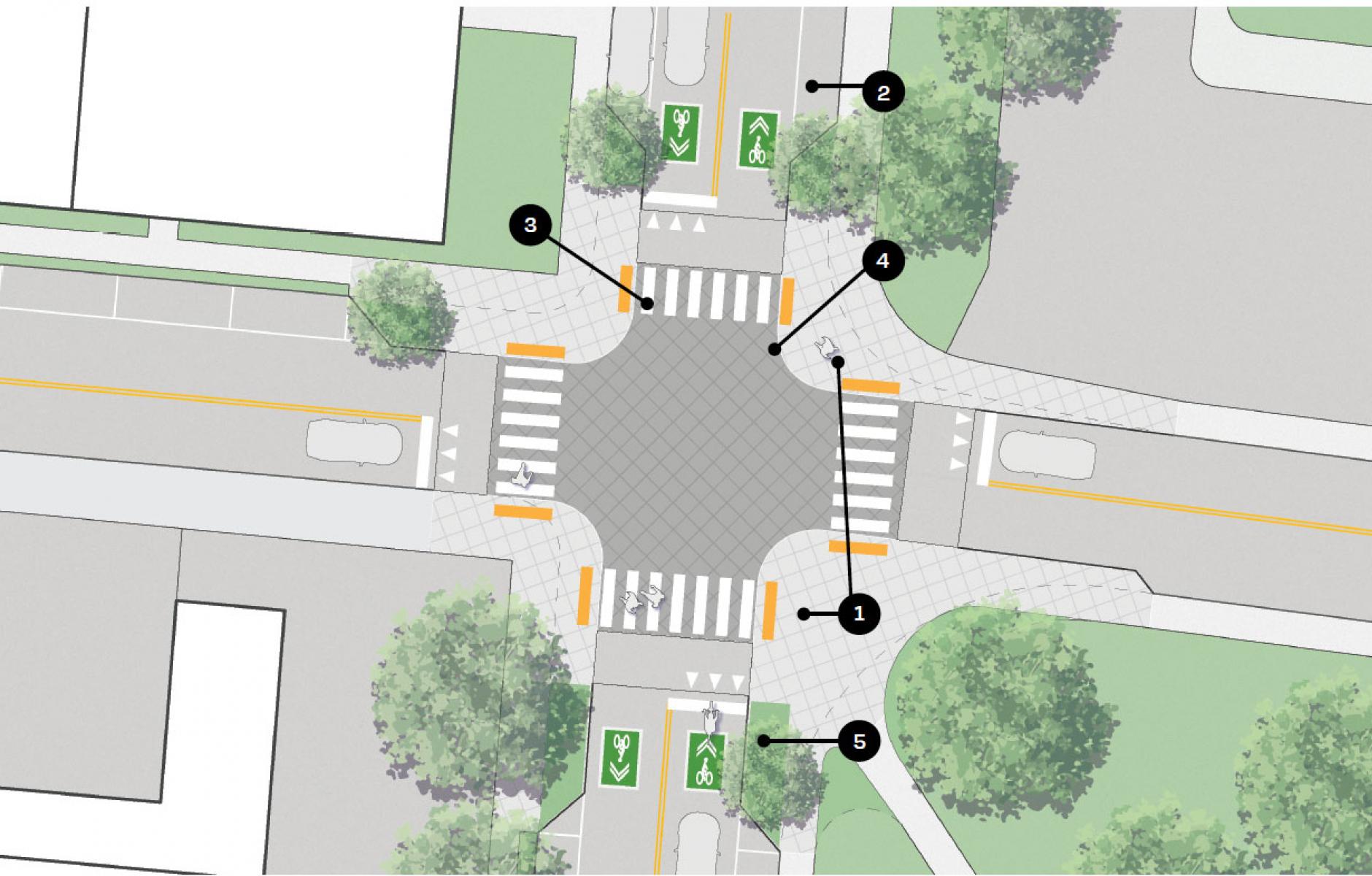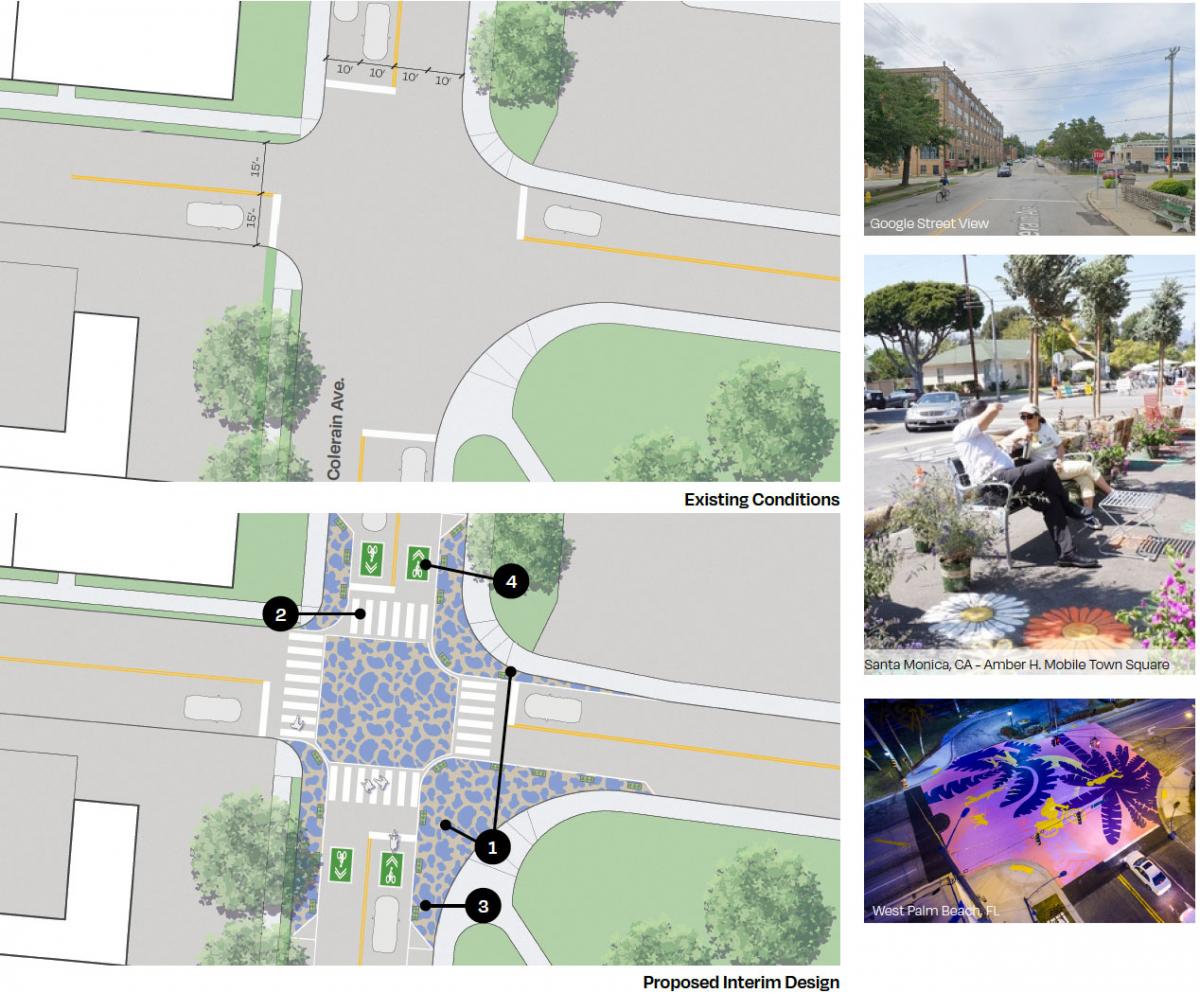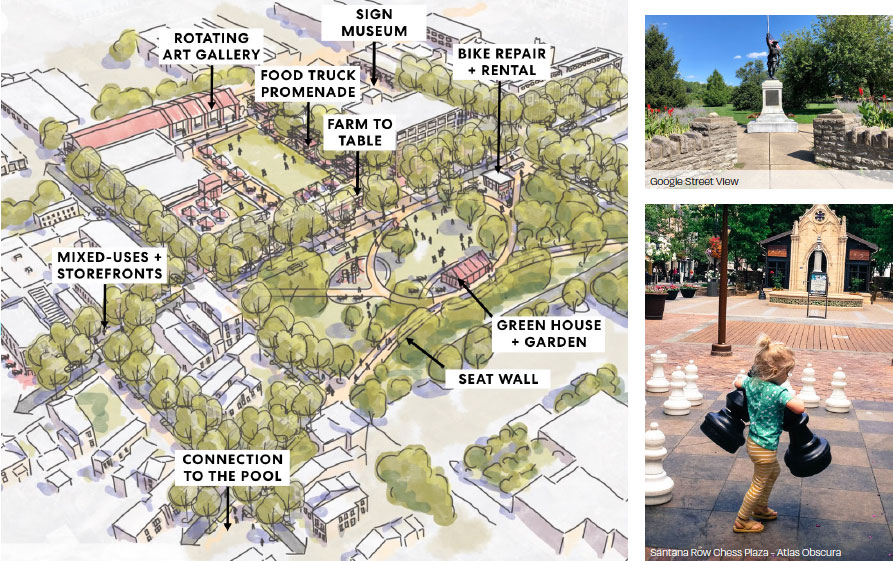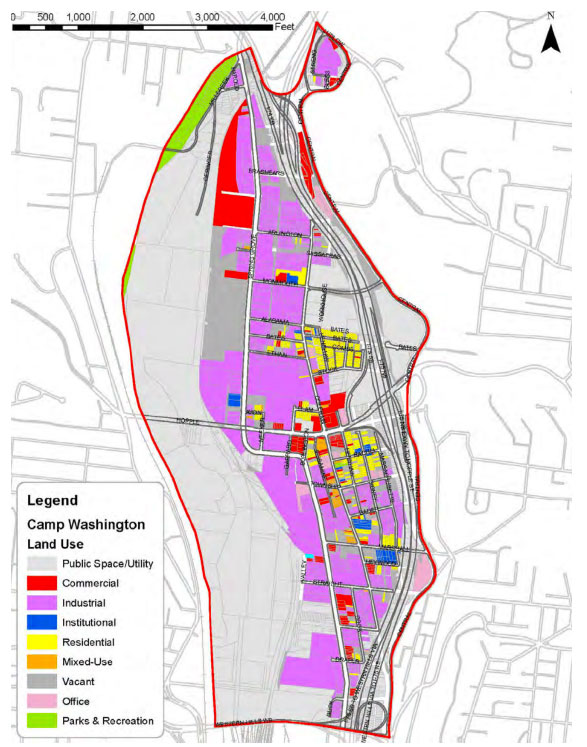
Legacy Report highlights a walkable public realm
The final report of CNU’s Camp Washington Legacy Project in Cincinnati was delivered in early August, and it is outstanding. Legacy Projects leverage CNU’s planning and design expertise to impact the host region for the annual Congress in the long term.
Four projects were initiated in the Cincinnati region for CNU 32 this year, including Camp Washington, an industrial neighborhood sandwiched between a rail yard and Interstate two miles northwest of downtown. The Camp Washington CNU 32 Legacy Project Final Report addresses how to manage growth in the quirky, artistic area decimated by population decline over the last 50 years but with tremendous potential for growth. The team was led by planners Arup, Street Plans, Perkins+Will, and the Camp Washington Urban Revitalization Corporation (CWURC).
The planners cover many issues, from zoning reform to neighborhood culture, mixed-use, missing middle housing, connectivity to other parts of the city, redesign of public spaces, and support for ongoing industry. The report particularly emphasizes strategic improvements to the public realm to improve access and walkability.
Plans for the intersection at Colerain and Monmouth avenues are a case in point. In the northern part of Camp Washington, the intersection is a key juncture: Colerain is the neighborhood's “main street,” while Monmouth is one of the few streets crossing I-75, the highway barrier to the east. The intersection is adjacent to a public square with great potential, the underutilized Valley Park, which could become a central gathering spot for Camp Washington.
The intersection is too large and difficult to cross on foot, allowing motor vehicles to move too fast. The plan shows how to repair Colerain and Monmouth in two steps using the “Quick Build” idea developed by Street Plans. “Quick Build” is a useful innovation in retrofitting automobile-oriented places. As the name implies, Quick Build can be implemented rapidly as infrastructure projects go. The results are tested. The design can be adjusted if problems emerge because the makeover is largely painted with moveable barriers. Quick Build can last several years (up to 5 or 7 if necessary) while design, engineering, and funds are gathered for a permanent rebuild.

This process has many advantages over the usual process. Transforming a street or intersection involves visioning, and citizens understand and get excited about the idea for a limited time. Immediate implementation, when the public is behind the project, is best.
Citizen comprehension and buy-in can dissipate if the city waits many years to gather the resources and plans for a long-term overhaul. Many citizens may have moved to the city several years later and never heard of the visioning process. Second, Quick Build allows testing and adjustment of the design. The city may be stuck with a flawed final design without that iterative process.
The Colerain and Monmouth redesign has five main components that are common solutions to overlarge, automobile-oriented intersections (the numbers relate to the plan at the top of this article):
- Curb extensions decrease turning speed and crossing distance. While maintaining the same number of travel lanes in each direction, the intersection's area is reduced to about half its current size.
- On-street parking and the travel lane edges are clearly marked on the blocks around the intersection.
- High-visibility crosswalks improve the visibility of pedestrians, who have a much shorter distance to cross.
- A raised intersection in the permanent design improves accessibility and slows vehicles.
- Greenery on the curb extensions captures stormwater, provides shade (if trees are planted), and calms traffic.
While the final project involves substantial concrete, asphalt, and landscaping, “Quick Build” can be accomplished mostly with painted designs to delineate the curb extensions, crosswalks, and the middle of the intersection. Moveable planters protect pedestrians and bring greenery to the street.
This two-step process works well, as demonstrated by the redo of a historic square in Jersey City, New Jersey, which involved a road diet and reconstruction of the square, as reported this week by Public Square.
Camp Washington includes multiple intersections that could be rebuilt, greatly boosting walkability, and the team presents designs for Quick Build and permanent enhancements of many such junctures.

As indicated above, there is much more to this report, focusing on parks, housing, mixed-use, culture, active transportation, connectivity, adaptive reuse of high-profile vacant buildings, and more. As the team explains:
“The Camp Washington of the future will be an inclusive, mixed-use neighborhood comprised of an increased number of residents, a dynamic light manufacturing sector, and affordable spaces for makers and artists to practice and apply their crafts. The neighborhood will be better connected to the rest of the city with increased walking, cycling, and transit connections and provide a unique and authentic walkable main street experience along Colerain Avenue.” For more details on this project, see this earlier report.





